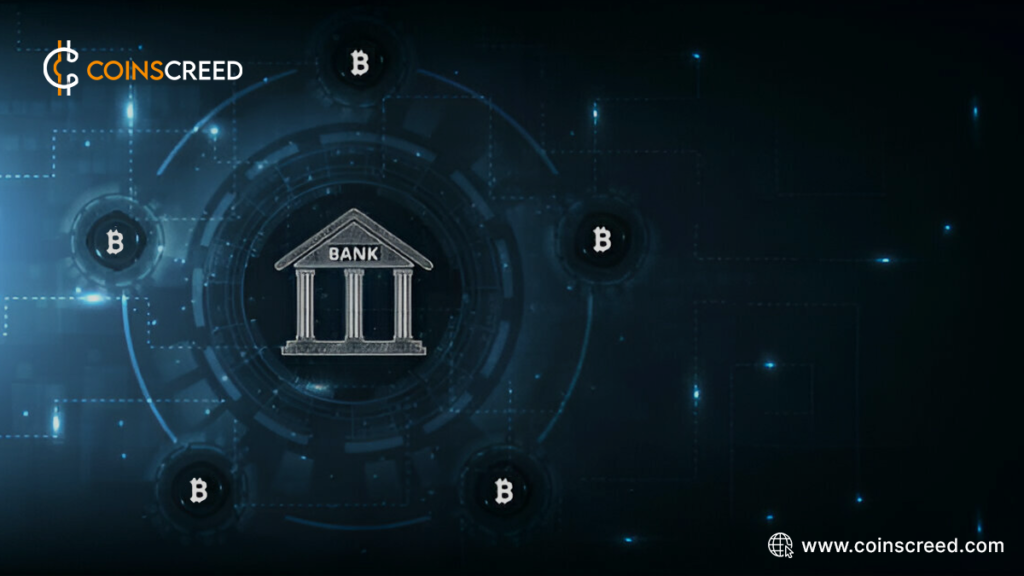In Traditional finance, innovation drives progress as banking systems adapt to changing technologies and consumer demands.

One such technological innovation that is reshaping the landscape of finance is blockchain. Originally introduced as the underlying technology behind Bitcoin, blockchain has since evolved into a powerful tool with the potential to disrupt traditional banking and finance in profound ways. This article will discuss how blockchain disrupts traditional banking and finance.
Understanding Blockchain
Blockchain is a decentralized, distributed ledger technology that records transactions across a network of computers. Unlike traditional banking systems that rely on a central authority to verify and process transactions, blockchain operates on a peer-to-peer network, allowing for secure and transparent transactions without intermediaries.
Each transaction is recorded in a “block” linked to the previous block, creating a chronological chain of immutable and tamper-proof transactions.
Traditional Banking and Finance
Traditional banking and finance refer to the established system of financial institutions and practices that have existed for decades.
This includes banks, credit unions, investment firms, and insurance companies that offer a range of financial products and services, such as savings accounts, loans, mortgages, investment management, and insurance policies.
Traditional banking and finance operate within regulated frameworks, prioritize trust and security, and often provide personalized services with a human touch.
How Blockchain is Disrupting Traditional Banking and Finance
Blockchain technology is disrupting traditional banking and finance in several ways:
Disintermediation
Disintermediation is the process of eliminating intermediaries or mediators from a transaction or process. In finance, disintermediation often refers to bypassing traditional banking institutions and conducting transactions directly between parties.
This can lead to cost savings, increased efficiency, and greater transparency. With its peer-to-peer network and decentralized ledger system, Blockchain technology is a prime example of disintermediation in the financial industry. It enables direct transactions between participants without banks or other intermediaries.
Enhanced Security
Enhanced security refers to improving and strengthening protective measures to safeguard against threats and vulnerabilities.
In finance and technology, enhanced security involves implementing advanced encryption techniques, multi-factor authentication, and decentralized storage systems to protect sensitive data and transactions from unauthorized access, manipulation, or fraud.
With its decentralized and immutable ledger system, blockchain technology is renowned for offering enhanced security by cryptographically securing transactions and making them tamper-proof. This heightened level of security instills trust among participants and mitigates risks, making blockchain a preferred solution for various applications across industries.
Transparency
Transparency entails openness, clarity, and accessibility of information within a system or process. In the financial context, transparency refers to the visibility of transactions, operations, and data to relevant stakeholders.
Blockchain technology exemplifies transparency by providing a decentralized and immutable ledger where transactions are recorded in a transparent and tamper-proof manner. Participants in a blockchain network can access and verify transaction history, ensuring trust and accountability.
This transparency fosters confidence among users, reduces the potential for fraud or manipulation, and promotes a more trustworthy and efficient financial ecosystem.
Faster Settlements
Faster settlements refer to accelerating transaction processing and confirmation times in financial transactions. In traditional banking systems, settlements can take days due to intermediary processes and clearance procedures.
However, blockchain technology facilitates near-instantaneous settlements by eliminating intermediaries and enabling direct peer-to-peer transactions. With blockchain, transactions are recorded and validated in real-time across a decentralized network, significantly reducing settlement times.
This expedited settlement process enhances efficiency, reduces operational costs, and provides users quicker access to funds or assets, streamlining financial operations and improving overall transactional efficiency.
Cost Savings
By streamlining processes and reducing the need for intermediaries, blockchain can significantly lower transaction costs for businesses and consumers.
Financial Inclusion
Financial inclusion refers to the accessibility and availability of financial services to all segments of society, particularly those underserved or marginalized. In traditional banking systems, certain demographics may face barriers to accessing banking services due to geographic location, income level, or lack of documentation.
However, blockchain technology has the potential to promote financial inclusion by providing access to banking and payment systems without the need for a traditional bank account. Through decentralized finance (DeFi) platforms and digital wallets, individuals can participate in financial activities such as lending, borrowing, and investing using only a smartphone and internet connection.
By democratizing access to financial services, blockchain technology empowers individuals and communities to participate in the global economy, reduce poverty, and achieve economic empowerment.
Smart Contracts
Smart contracts are self-executing agreements with terms directly written into code. They automatically execute and enforce the terms of the agreement when predefined conditions are met without intermediaries. Built on blockchain technology, smart contracts enable trustless and transparent transactions, reducing the risk of fraud and errors.
They have diverse applications across industries, including finance, supply chain management, real estate, and healthcare. Smart contracts increase efficiency, reduce costs, and facilitate secure and seamless transactions by automating and streamlining contractual processes.
Tokenization of Assets
Tokenizing assets involves representing real-world assets, such as real estate, stocks, or artwork, as digital tokens on a blockchain. These tokens are programmable, divisible, and can be traded peer-to-peer, providing liquidity and fractional ownership of traditionally illiquid assets. By tokenizing assets, blockchain technology enables greater accessibility to investment opportunities, reduces barriers to entry, and increases market efficiency.
Additionally, tokenization enhances transparency and security by recording ownership and transaction history on a decentralized ledger, mitigating fraud and improving participant trust. Overall, the tokenization of assets unlocks new possibilities for asset management and investment diversification and democratizes access to wealth-building opportunities.
Decentralized Finance (DeFi)
Blockchain has given rise to decentralized finance platforms offering a wide range of financial services, including lending, borrowing, and trading, without traditional intermediaries.
Conclusion
Blockchain technology is fundamentally reshaping traditional banking and finance by introducing new trust, transparency, and efficiency paradigms. From disintermediation to smart contracts and decentralized finance, the potential applications of blockchain are vast and transformative.
As the financial industry embraces blockchain technology, we expect to see further innovation and disruption in the years to come, ultimately leading to a more inclusive, transparent, and efficient financial ecosystem.
